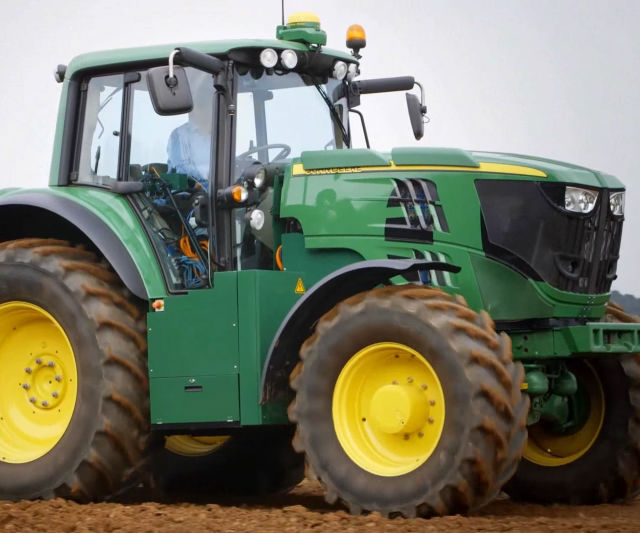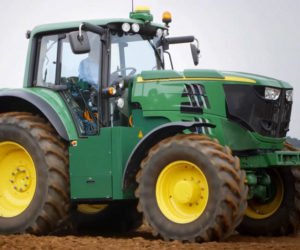Electric Tractors and Attachments

 While the main advancements in farm equipment for the past decade have focused on developing precision agriculture, engineers haven’t been sitting idly, expecting technology to do all the work. Equipment manufacturers around the world are experimenting with ways for electrical equipment to improve tractors and implements.
While the main advancements in farm equipment for the past decade have focused on developing precision agriculture, engineers haven’t been sitting idly, expecting technology to do all the work. Equipment manufacturers around the world are experimenting with ways for electrical equipment to improve tractors and implements.
“Electrification is coming – if we can figure out how to keep the price down,” says Tim Stombaugh, an Extension professor of machine systems automation engineering at the University of Kentucky. “It is more efficient, is quieter, requires less maintenance, is more controllable, and is potentially safer and lighter.”
There are two main experiments being conducted on how electric power can be used: one for diesel-electric tractors and one for battery-powered tractors.
DIESEL-ELECTRIC TRACTORS
Back in 2001, Fendt and AGCO began intensively researching how electric power generated by an electric tractor could be transferred to an implement. In 2013, the results of that work went on display for the first time when Fendt presented the X Concept tractor at Agritechnica.
The X Concept is powered by AGCO’s Power four-cylinder diesel engine. The compact design of the engine allows the tractor to accommodate the necessary components for the electrical technology, including a high-performance alternator, power electronics, wiring, and the specialist heat exchanger.
The electrical systems within the X Concept – dubbed the Powerbus – can provide up to 174 hp. to implements through a compact power socket. The system also provides power to the internal tractor, including the electrical fan drive and the coolant pumps.
To see how this prototype could work on the farm, Fendt also needed to develop a high-voltage, electrically powered implement. Two years ago, Fendt introduced another prototype: an electric-driven rotary rake called the Former 12555 X.
“We are confident that electricity will be used more and more in agriculture. This is one example from Fendt,” says Stephan Bea, head of sales engineering at Fendt.
Each rotor on the rake has an integral electric drive powered by the Fendt X Concept tractor. The torque motors are integrated into each rake socket, eliminating the need for separate housing, gearbox, or bearings.
Because each motor is regulated independently, you are able to vary the speed of each rotor. For example, you can turn the front rotors more quickly than the rear. The speed of the rotors is also no longer dependent on the engine or the ground speed of the tractor. This makes it easier to react quickly to different crop situations.
“The electric-powered rake is working well under various conditions, and it passed several field tests during the past two years,” says Benno Pichlmaier, AGCO.
In addition to working on its own implements, AGCO is also working with external partners in other key areas, including hay, seeding, plant protection, and harvesting.
Because there is a low demand for this technology, Pichlmaier admits there is no need for a quick launch. “Current mechanical and hydraulic systems will remain in place for a long time,” he says.
However, he does believe that electric power systems will play more and more of a significant role. “We are convinced that electric power will be used for special tractor-implement combinations in the future,” says Pichlmaier.
BATTERY-POWERED TRACTORS
AGCO isn’t the only major OEM working on ways that electric power can be used in farm equipment. At the end of 2016, John Deere introduced a prototype for an all-electric tractor. Nicknamed SESAM (sustainable energy supply for agricultural machinery), the battery-powered tractor has all the functions and features of a standard tractor, yet it offers the benefits of electrification.
The tractor is modeled on John Deere’s 6R series tractors. Two electric motors operate an adapted DirectDrive transmission, producing 174 hp. of continuous power and peak power of 400 hp. One motor powers the drivetrain; the other motor is used for the PTO and auxiliaries. If necessary, both motors are linked to supply full power for driving or for PTO and hydraulic work.
One battery charge lasts up to four operating hours in mixed-mode operations or for 34 miles of travel. The battery takes three hours to charge and can be charged up to 3,100 times.
When the machine is at idle, there are no energy losses. The SESAM tractor is emissions-free and runs at a lower noise level than traditional tractors.
According to a news release from John Deere, the tractor is an elementary component of John Deere’s vision of future energy autonomous farms. “The John Deere all-electric tractor was designed and created to help evaluate the feasibility of such a tractor and to demonstrate John Deere’s advanced, innovative expertise and capabilities in producing a battery-powered tractor for agricultural use,” the release stated.
FUTURE APPLICATIONS
For fieldwork applications, Stombaugh believes that Fendt’s electrification solution will be practical much earlier than the battery solution.
“Longevity is the primary limitation for operating tractors with battery technology,” he says. “The tractors aren’t getting the hours typically needed to operate for a full day, so you’d have to stop and recharge.”
However, battery technology is an area that is continually improving, so new batteries that are smaller and last longer could make battery-powered tractors more feasible, points out Stombaugh.
In addition, battery-powered tractors could work well in other ag applications, such as for a chore tractor that is only used a few hours a day to feed livestock.
“The problem is the cost. That’s the trade-off,” he says. “There are applications where battery technology may be better suited, but are you willing to spend money on it?”
Bringing the price point down will be one of the main limiting factors for introducing more electric equipment into farming.
“The electric motors used have to be specialized for ag applications, so they have to be able to take dust and tolerate a wide range of temperatures,” notes Stombaugh. “Developing that technology and making it available at a larger volume with a price point that makes sense will take a while to mature.”

One Response to “Electric Tractors and Attachments”